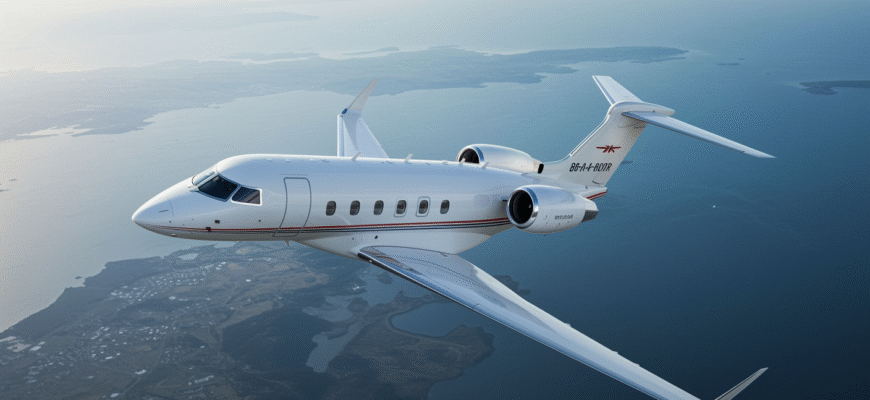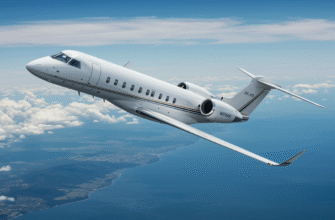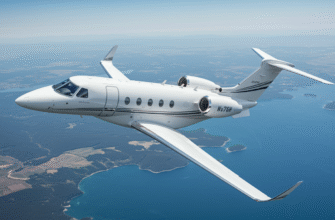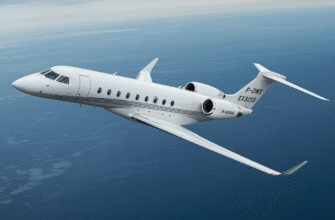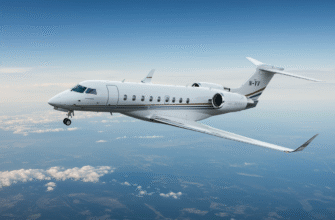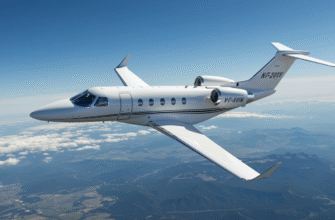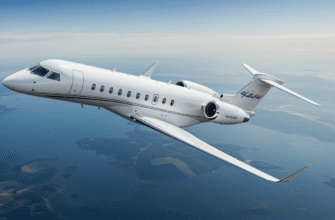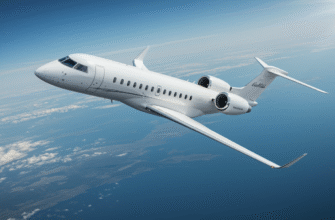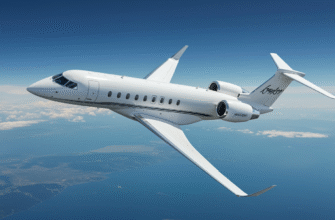Some jets whisper luxury. The Bombardier Challenger 850 doesn’t whisper — it stretches out at 40,000 feet and offers you a drink. Then another. If you’ve ever wondered if it’s possible to take the bones of a commercial airliner and turn it into something wildly exclusive, the 850 is proof that not only is it possible — it’s genius. Originally born from the Bombardier CRJ200 regional jet, this beast was redesigned with only one mission: Move small groups in high style, without the compromise.
Turns out, not everyone wants a Gulfstream badge or a Falcon 7X signature winglet. Some buyers want space. Others want a full dining area and a nap zone that doesn’t feel like coach in disguise. Enter the Challenger 850. It’s a favorite among those who work hard, tour harder, and don’t settle for cramped cabins. From headline artists to next-level exec teams, it’s no surprise why people keep circling back to this operator-friendly jet when the mission calls for size, silence, and sophistication in the skies.
The Bombardier Challenger 850: A Private Jet In A Class Of Its Own
Why does a business jet based on an old regional airline platform still keep turning heads? Simple. The transformation is stunning. The Challenger 850 takes everything people loved about dependable commercial flights—strong airframe, ample room, and easy maintenance—and flips it into a swank private jet you can live in for a few hours (or several legs).
It wasn’t built for “just anyone.” You’re more likely to find Grammy-winning tour crews, contract-bound NBA teams, or sharp-suited C-suite entourages stretching out in one of these. They don’t just need style; they need volume, privacy, and performance without blowing $40 million. So they skip past names like Gulfstream or Falcon because this one’s smarter, not louder.
The 850’s allure isn’t about flash. It’s about function meeting low-key luxury in a way that quietly makes other jets feel like a snug clubroom. If a jet could scream “We’re not here to impress — just here to dominate”—this would be it.
Space Reimagined: Airliner Dimensions, Luxe Details
Some private jets flex with exotic materials or celebrity endorsements. The 850 flexes with square footage. Its interior volume pushes nearly 2,000 cubic feet, nearly double what many mid-size competitors offer. That added space creates a backdrop for something rare in aviation: smart zoning.
Inside, it feels like someone designed a penthouse and just happened to add wings. Operators and owners split cabins into standalone areas — think lounge, dining, work zone, rest space. It’s not just plush; it’s practical.
- Cabin zoning: Meetings in the front, mid-cabin meals and socializing, private rest in the back.
- Layout options: Some go ultra-lounge style for 13 passengers; others favor full business suites for up to 16.
- Custom touches: Fold-flat divans, private bedrooms, spa-grade lavs, and full conference tables are common adds.
A sliding door isn’t just for looks. Soundproof partitions actually turn the aft section into a resting suite that gives you real shut-eye at altitude.
Here’s a quick look at what makes the space different:
| Feature | Measurement |
|---|---|
| Cabin Length | 48 ft 5 in |
| Cabin Width | 8 ft 2 in |
| Cabin Volume | 1,990 cu ft |
| Passenger Capacity | 13 to 16 (typical) |
| Luggage Space | Up to 327 cu ft (internal + external) |
No surprise — some operators even carve out room for full-on dressing areas, double beds, or studio-inspired lounges. You don’t just sit and wait to land; you stretch out, eat real food, take calls, and move around like you’re not suspended in the sky at jet speed.
Cost Per Hour: Underrated Value
If it feels too good to be true, don’t worry — this jet delivers without punishing your wallet like its famous rivals. When stacked up against the Gulfstream G550 or Dassault Falcon 900, the Challenger 850 comes in at a surprisingly humane hourly rate.
Here’s the catch: It’s not because it cuts corners. It’s actually cheaper to operate because it carries the DNA of an airliner. That means wide availability of parts and support mechanics who understand the CRJ200 platform.
Let’s break it down:
- Operating cost: Around $3,800–$4,000 per flight hour — lower than many similar-sized jets.
- Maintenance: Uses common parts from the CRJ series. Easier to fix, easier to keep flying.
- Acquisition: Strong value in the pre-owned market. Many go for under $10 million.
In a world where newer long-range competitors easily clear the $40 million mark, the 850 stays grounded in reality. It gives legacy-level comfort without the Infinity Pool price tag.
Because of that, it’s also found a niche in the fractional jet ownership market and luxury charter pool. It covers the middle ground — more lift than a super-midsize, less cost than an ultra-long-range. Perfect for teams that move often and need the cabin space to match their ambitions.
Think of it as first-class travel… minus the crowd, the terminal, and the $60 airport Caesar salad.
Performance Without Compromise
Some jets promise luxury, others promise range — but few pull off both. The Bombardier Challenger 850 isn’t trying to win the Instagram game with sleek photoshoots. It’s built for real travelers, the kind of people flying multiple cities in a week or crossing continents with an entourage and no time for delays.
With a typical range hovering around 2,800 nautical miles, this jet can comfortably connect coastlines like New York to LA or even London to Dubai — with a smart tech stop folded in. It cruises at speeds on par with longer-range business jets, cutting travel time while keeping things smooth at 41,000 feet.
And here’s where it gets interesting: the Challenger 850 is built from the same DNA as the CRJ200 regional airliner — a proven workhorse flown by commercial fleets around the world. That means serious reliability, a stronger frame, and plenty of room to stretch out. At nearly 88 feet long, it dwarfs many “top-tier” private jets — almost 40 feet longer than the popular Challenger 605. The result? A flying experience that feels closer to a boutique airline cabin than a cramped executive jet.
It doesn’t shy away from runways either. With the ability to launch off 5,000-6,000 foot strips, it’s built for regional airports with personality, not just big-city hubs. Balanced field performance means more operators can plan remote landings or close-to-stage arrivals when touring artists need to hop from venue to venue.
Long legs, proven bones, and space that doesn’t make you choose between your crew and your bags — this isn’t a luxury compromise. It’s performance with room to live.
Cult Favorite Among Touring Artists
Most jets are built for business. The Challenger 850? It’s built for the road — or rather, the skies — that artists, athletes, and production teams live on. When your life moves in tour buses, behind-the-scenes passes, and last-minute cities, you need a jet that plays hard at 40,000 feet.
Celebrities and musicians love the 850 for what it doesn’t shout. You won’t see it list-bragging in celebrity jet rankings, but step onboard and you’ll understand why it’s quietly booked solid. Its fully customizable interior has housed everything from recording studios to post-show lounges, private bedrooms to spa-like showers. One client reportedly converted an entire zone just for yoga. Another asked for a mobile nursery. Pets are often welcome and expected.
- Massive baggage space fits wardrobe trunks, sound equipment, or surfboards
- Flight attendants customize flying space for pets, babies, or post-concert wind-down setups
- Clients have transformed interiors into on-the-go clubs, press rooms, or bridal suites
Despite its big-footprint vibes, the 850 flies under the radar — and that’s the point. It doesn’t scream status in paparazzi territories, but in the artist world, it’s a flex. The kind of flex that keeps entourages private and schedules fluid. And that makes it more than a ride — it becomes part of the tour.
The 850 Experience: What Passengers Actually Love
Being on the road is only glamorous from the outside. The Challenger 850 gets that, stripping the turbulence of travel with a cabin that feels more like a mid-air suite than a jet. The magic starts with cabin altitude that’s lower than most in its class — keeping passengers alert and rested, even on long hauls.
The seats are generously wide. Storage spots? Smartly placed throughout, so everything from travel tech to baby diapers finds its home. Some charter interiors even include standing showers and full-length beds, creating zones that mimic hotel suites.
Tech setups level up hard here. Satellite Wi-Fi strong enough to stream, surround sound for movie night, cordless lighting controls, and full-screen monitors give the flight a cinematic edge. A few operators take it further with app-connected AV settings — control your entire environment from your phone.
- Satellite-enabled connectivity and AV control via smartphone
- Surround sound and full HD screens for immersive media
- Lighting, shades, and ambience managed through smart controls
And then there’s the crew. Unlike crowded business class setups, the Challenger 850 typically flies with a deluxe crew ratio — two pilots and a dedicated attendant for the cabin. Expect real catering, not snack trays. Menus are often client-specific, made-to-order before each charter leg. Some air operators offer concierge services, curating your entire experience from tarmac menus to pillow types.
It’s not just luxury in the air. It’s being seen, held, and rested — while 500 mph melts the miles below.
